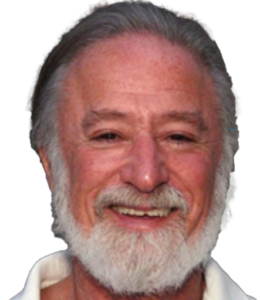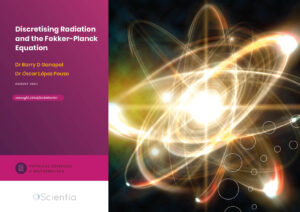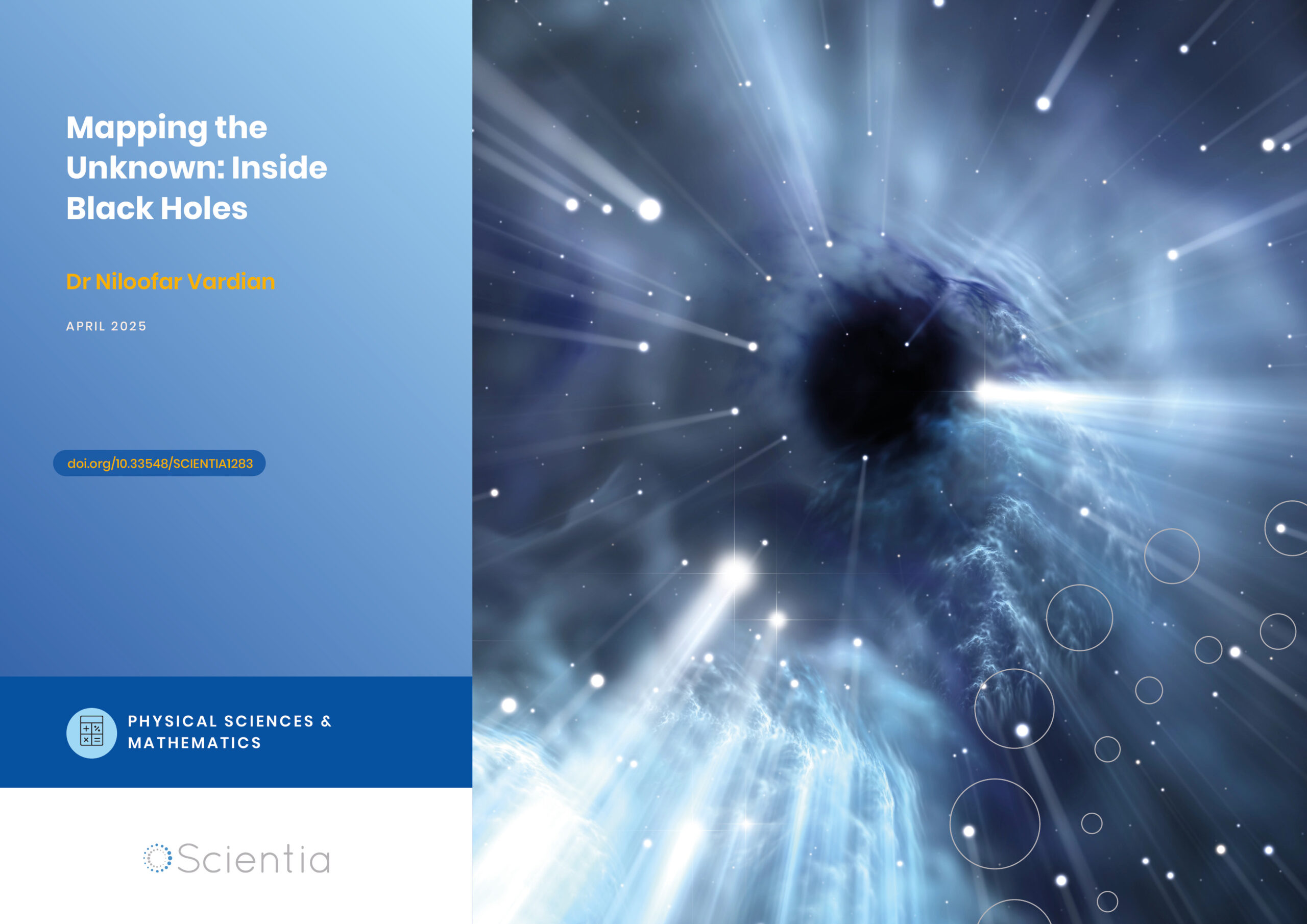Dr Barry Ganapol | Discretising Radiation and the Fokker-Planck Equation
Dr Barry Ganapol from the University of Arizona and Dr Ó López Pouso from the University of Santiago de Compostela are working to address the fundamental challenge of solving the Fokker-Planck Equation as applied to radiation transport theory. They introduce a novel application of the Response Matrix/Discrete Ordinates method, achieving six-figure precision in modelling how radiation (specifically electrons and photons) scatters through small angles. This breakthrough could have significant implications for fields ranging from medical imaging to environmental science, enhancing our ability to predict and control radiation’s interaction with matter.
From the Big Bang to the Current Day
Radiation from the sun is thought to underpin the origin of life – from the Big Bang to the current day, radiation continues to influence the evolution of life on Earth. Unsurprisingly, radiation is a cornerstone of modern technology: its applications range from the medical field, where it is used in treatments and diagnostics, to environmental science, where understanding radiation’s behaviour can help protect against and limit harmful exposure.
Radiation and the Fokker-Planck Equation
The study of how radiation moves through different materials – known as radiative transfer – is vital for advancing these applications. To this end, one equation is crucial: the Fokker-Planck Equation (FPE). This equation models the diffusion of particles, like photons or electrons, allowing predictions of how radiation interacts with matter.
In the realm of radiative transfer, accurate predictions of how radiation scatters and penetrates materials are essential. They enhance the safety and efficacy of radiation-based medical treatments and improve our understanding of environmental applications. Solving the FPE helps scientists and engineers design better equipment and protocols across various fields, from medical imaging devices to nuclear reactors.
Partial Differential Equations
Partial differential equations (PDEs) are mathematical equations that describe phenomena involving changes over continuous domains, such as space and time, or in this case, space and particle direction. They are fundamental in expressing the conservation laws of physics and in other contexts, such as financial and biological systems. Famous examples include the Navier-Stokes equations, which model fluid flow and are crucial in aerodynamics and meteorology, and the Einstein field equations in general relativity that describe gravitational forces in the universe.
Despite their widespread applications, solving PDEs is generally challenging, making analytical solutions (the ones that give an explicit function satisfying the equation) rare and highly rewarding to derive. Instead, researchers often resort to numerical methods to approximate solutions, which can be computationally intensive and require sophisticated techniques, or apply additional simplifications or symmetries to the problem in order to render a useful solution.

Challenges in Modelling Radiation
Small-angle scattering of electrons and photons plays an important role across scientific and engineering disciplines, perhaps most notably in medical imaging, materials science, and atmospheric physics. The phenomenon, where particles deviate slightly from their original path due to interactions with matter, must be thoroughly understood if we are to explain how radiation propagates through different media.
Unfortunately, accurately representing this process through differential scattering in mathematical models presents substantial challenges. Differential scattering involves changes in the particles’ trajectory at infinitesimal angles, requiring highly sensitive and precise calculations to predict, and the complexity arises from the need to account for a vast number of minor interactions that cumulatively have significant effects on the overall path of the radiation.
Naturally, this level of detail is not manageable through exact methods, and requires instead different models of the system that, sacrificing a bit of precision, allow for calculations that are sufficiently easy to perform with modern computers. Still, said computational models must be sophisticated and capable of handling the nuances of particle behaviour with high fidelity and precision, posing considerable challenges for researchers working on radiation transport equations.
A New Numerical Method to Obtain Precise Solutions
Dr Barry Ganapol, affiliated with the University of Arizona, focuses on the application of numerical methods to solve complex physical problems, including those involving radiation transport. His research encompasses both theoretical and computational aspects, significantly contributing to the field of applied mathematics within an engineering context. In collaboration with Dr Ó López Pouso, the paper ‘Response Matrix/Discrete Ordinates Solution of the 1D Fokker-Planck Equation’ applies a novel and important method to the one-dimensional version of the equation to arrive at a very precise approximation of the solution – enabling several real-life applications of the theory.
Their work focused on applying the Response Matrix/Discrete Ordinates method to the FPE. This technique involves discretising (casting) the problem space into smaller, more manageable segments, then allowing the transport equation to express the solution in the discretised space through the ‘response matrix’. The ‘response matrix’ part of the method refers to how the input and exiting intensities connect across the medium, ensuring that the overall solution is consistent over the entire problem space.
Their findings demonstrated that this method could achieve near six-place accuracy in predicting the behaviour of the radiation field as it scatters and is absorbed by various materials. Such precision is particularly important in applications like medical imaging, where accurate modelling of radiation transport can directly impact the quality of diagnostic images and the effectiveness of treatments. In environmental protection, better predictive models can enhance safety protocols around radiation exposure and containment.
One surprising and innovative aspect of the research lies in its simplicity and application of the Response Matrix/Discrete Ordinates method to a problem traditionally viewed as too complex for such techniques. This was achieved by representing radiation through the matrix-exponential formalism of radiative transfer, which unlocks linear algebra techniques that enable splitting the problem into more manageable chunks.
Throughout the paper, several finer modelling choices are made by the researchers in discretising the problem, and they acknowledge that the ‘choice of how one discretises is essentially arbitrary but some choices may give better numerical results than others’. Indeed, the choices made by the researchers proved insightful, reaching an impressive six-digit precision (meaning that the first discrepant digits were found in the sixth decimal position) for the general case, which is in agreement with the standard method for solving this equation. Further, the observed computing time was on the order of minutes on a PC, making high-precision artificial intelligence applications possible.
Future directions involve generalising the method to be applied to more general cases or to heterogeneous biological media, as well as further refinements to achieve even higher precision or efficiency.
Appendix: The Role of Mathematics
For the mathematically interested reader, after angular discretisation, the proposed solution leads to two coupled first order even/odd parity ordinary vector differential equations corresponding to positive and negative particle directions. These equations combine into a single second order diffusion equation, whose solution, via matrix diagonalisation, is expressed as two normalised hyperbolic sine functions constructed to satisfy the incoming flux boundary conditions. The medium response matrix, relating the incoming intensities to the existing intensities at the medium boundaries, then follows. The known boundary intensities enable expression of the medium interior intensity. Numerical evaluation follows using convergence acceleration in quadrature order to give a high precision benchmark in comparison to the common discrete ordinate method.
SHARE
DOWNLOAD E-BOOK
REFERENCE
https://doi.org/10.33548/SCIENTIA1041
MEET THE RESEARCHERS

Dr Barry D Ganapol
University of Arizona
Tucson, AZ
USA
Dr Barry Ganapol is a professor with an extensive career in nuclear engineering and applied mathematics. His academic journey began with a BS in mechanical engineering from the University of California, Berkeley, in 1966, followed by an MS from Columbia University in nuclear engineering in 1967, and culminating in a PhD in engineering science from the University of California, Berkeley, in 1971. Dr. Ganapol has held prestigious positions at several institutions, including visiting professorships at the Massachusetts Institute of Technology, Texas A&M University, University of Tennessee, Idaho State University, and the University of New Mexico. He has been a faculty member at the University of Arizona since 1976, where he has made significant contributions to the fields of radiation and particle transport theory, neutron transport theory, reactor physics, fast reactor safety, and applied mathematics. His fascinating work has also extended to satellite remote sensing of vegetation from photon reflection.
CONTACT
E: ganapol@cowboy.ame.arizona.edu
W: https://ame.engineering.arizona.edu/faculty-staff/faculty/barry-d-ganapol

Dr Óscar López Pouso
Department of Applied Mathematics
University of Santiago de Compostela
A Coruña
Spain
Dr Óscar López Pouso is a mathematician. Born in 1967, Dr López Pouso began his research career by publishing theoretical articles and later directed his activity towards numerical analysis, always maintaining a special interest in equations relevant to nuclear engineering. He studied Mathematics at the University of Santiago de Compostela, where in 1999, he also earned his PhD. Subsequently, he undertook postdoctoral stays at the Complutense University of Madrid, the Autonomous University of Madrid, and the Sapienza University of Rome. He has maintained scientific relationships with researchers from various countries and is a co-author of the first result on the existence and uniqueness of a solution for the system modelling heat transfer by radiation, conduction, and convection simultaneously. His recent collaborations with Dr Barry Ganapol are proving to be highly stimulating and are generating new knowledge of broad scope.
CONTACT
KEY COLLABORATORS
Dr Ganapol’s extensive collaborative network includes professionals from various institutions, including Los Alamos National Laboratory, EG&G Idaho, Argonne National Laboratory, Swiss Federal Institute for Reactor Research, CEN Saclay, KAPL, NASA Ames Research Center, Science Applications Incorporated, Rome Air Development Center, AFRL, AFSOR, Mission Research Corporation, Phillips Laboratory, SRI International, ARCON Corporation, The Biosphere, Idaho National Laboratory, Lawrence Livermore National Laboratory and Oak Ridge National Laboratory.
FUNDING AND ACKNOWLEDGMENTS
OLP acknowledges support from Ministerio de Ciencia e Innovación, project PID2021-122625OB-I00 with funds from MCIN/AEI/10.13039/501100011033/ FEDER, UE, and from the Xunta de Galicia (2021 GRC Gl-1563 – ED431C 2021/15
FURTHER READING
BD Ganapol, Ó López Pouso, Ó, Response Matrix/Discrete Ordinates Solution of the 1D Fokker-Planck Equation, Nuclear Science and Engineering, 197(9), 2327–2342. DOI: https://doi.org/10.1080/00295639.2023.2194228
BD Ganapol, DE Kornreich, A 3-D neutron transport benchmark solution, Transport Theory and Statistical Physics, 24(1–3), 89–111. DOI: https://doi.org/10.1080/00411459508205121


REPUBLISH OUR ARTICLES
We encourage all formats of sharing and republishing of our articles. Whether you want to host on your website, publication or blog, we welcome this. Find out more
Creative Commons Licence (CC BY 4.0)
This work is licensed under a Creative Commons Attribution 4.0 International License. 
What does this mean?
Share: You can copy and redistribute the material in any medium or format
Adapt: You can change, and build upon the material for any purpose, even commercially.
Credit: You must give appropriate credit, provide a link to the license, and indicate if changes were made.
SUBSCRIBE NOW
Follow Us
MORE ARTICLES YOU MAY LIKE
Calculating Steering Friction: Essential Engineering for Military Aircraft Safety
The safe operation of military training aircraft depends on precise engineering calculations that most of us never consider. Dr Bogdan Adrian Nicolin and Dr Ilie Nicolin from the National Institute for Aerospace Research in Romania have developed sophisticated methods to calculate the steering friction moment in military aircraft. This critical engineering parameter ensures that pilots can safely control aircraft during taxiing, take-off, and landing – making their work essential for both pilot training and flight safety.
Dr Sang-Joon Cho | 3D Atomic Force Microscopy: Overcoming Challenges in Nano-Scale Measurement
Nano-scale imaging and measurement are crucial for the development of new gadgets – from the latest phones to advanced drug discovery technologies. Dr Sang-Joon Cho and his team at Park Systems Corporation have developed a new approach to measuring and characterising microscopic components, offering exciting potential to accelerate advancements in the technologies essential to the modern world.
Dr Niloofar Vardian | Mapping the Unknown: Inside Black Holes
Dr Niloofar Vardian at the SISSA school has advanced our understanding of black hole interiors through precise mathematical modelling. Her recent publication sheds light on previously inaccessible aspects of black hole dynamics, deepening our knowledge of these mysterious and difficult-to-study phenomena.
Dr Ying Zou | A New Type of Space Storm: The Extraordinary Auroral Event of April 2023
Space weather events can have dramatic effects on Earth’s magnetic field, potentially disrupting everything from power grids to GPS systems. Dr Ying Zou and her colleagues Dr Jesper Gjerloev and Shin Ohtani from Johns Hopkins University Applied Physics Laboratory led a groundbreaking investigation into an extraordinary disturbance in Earth’s magnetic field that occurred in April 2023. This unprecedented event is reshaping our understanding of how solar activity can trigger extreme space weather that impacts our technological systems.





